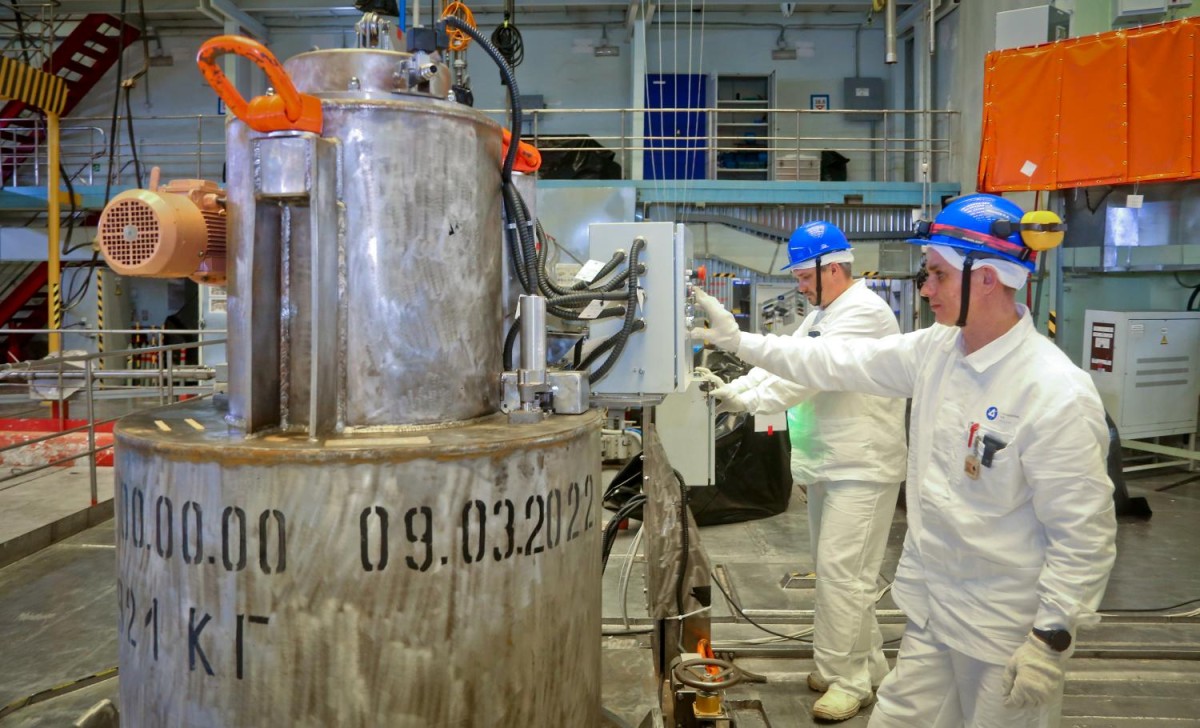 Russia’s Smolensk NPP has sent to Leningrad NPP the first ever batch of cobalt-60 (Co-60) in four containers. Co-60 is used in the production of gamma radiation sources widely employed in medicine, industry and agriculture. The most widely used Co-60 from nuclear utility Rosenergoatom is the production of Co-60 ionising radiation sources for irradiators that sterilise medical devices, food and other products. One such shipment of Co-60 from Smolensk will sterilise at least 30,000 cubic metres of medical products.
Russia’s Smolensk NPP has sent to Leningrad NPP the first ever batch of cobalt-60 (Co-60) in four containers. Co-60 is used in the production of gamma radiation sources widely employed in medicine, industry and agriculture. The most widely used Co-60 from nuclear utility Rosenergoatom is the production of Co-60 ionising radiation sources for irradiators that sterilise medical devices, food and other products. One such shipment of Co-60 from Smolensk will sterilise at least 30,000 cubic metres of medical products.
Rosenergoatom is one of the world’s main producers of Co-60. The RBMK-type reactors operated at the Smolensk NPP have a competitive advantage over other types of power reactors in terms of isotope production. Without changing the technological cycle of power generation, our reactor plants can reliably irradiate materials and ensure stable supplies of the valuable isotope,” said Smolensk NPP director Pavel Lubensky.
Smolensk NPP began Co-60 production in 2017. Rods of additional cobalt absorbers (SDPKs) manufactured by JSC Mashinostroitelny Zavod (part of Rosatom’s Fuel Company TVEL) were loaded into the three power units in stages. Each additional absorber comprises 144 nickel-plated natural cobalt-59 capsules. In total, 80 SDPKs were loaded into the Smolensk reactors in 2017-2019. The planned period of "maturation" – the transformation of the starting material into the cobalt-60 isotope – is about five years.
“Since 2017, a huge amount of work has been done to prepare for the extraction of irradiated cobalt-60. A set of domestic equipment for handling irradiated rods has been designed, manufactured, assembled and tested,” said Anatoly Karpinsky, Deputy Chief Engineer for Safety & Reliability at Smolensk. “At the beginning of 2023, we started to recover irradiated products that had accumulated the required level of activity. The entire volume of additional absorbers loaded into SNPP power units in 2017-2019 will be removed within 2.5-3 years and new ones will be gradually loaded.”
Currently the rods of additional absorbers are being removed from the units 1&2. In the at-reactor storage pools under a protective layer of water, they are disassembled into separate links, then placed in transport and packaging containers. Using specialised transport, in compliance with all safety requirements for handling radioactive materials, they were sent to the Leningrad NPP to prepare consignments for shipment to the customer.
The volumes of cobalt-60 planned for production at the Smolensk NPP have been contracted for the entire period of operation of the power units. In addition to the production of cobalt-60, Smolensk NPP is preparing to create new products – the production of medical isotopes of iodine-131, molybdenum-99 and lutetium-177 to supply Russian manufacturers of radiopharmaceuticals.
Image: Russia’s Smolensk NPP has sent Leningrad NPP the first ever batch of cobalt-60 (courtesy of Smolensk NPP)






